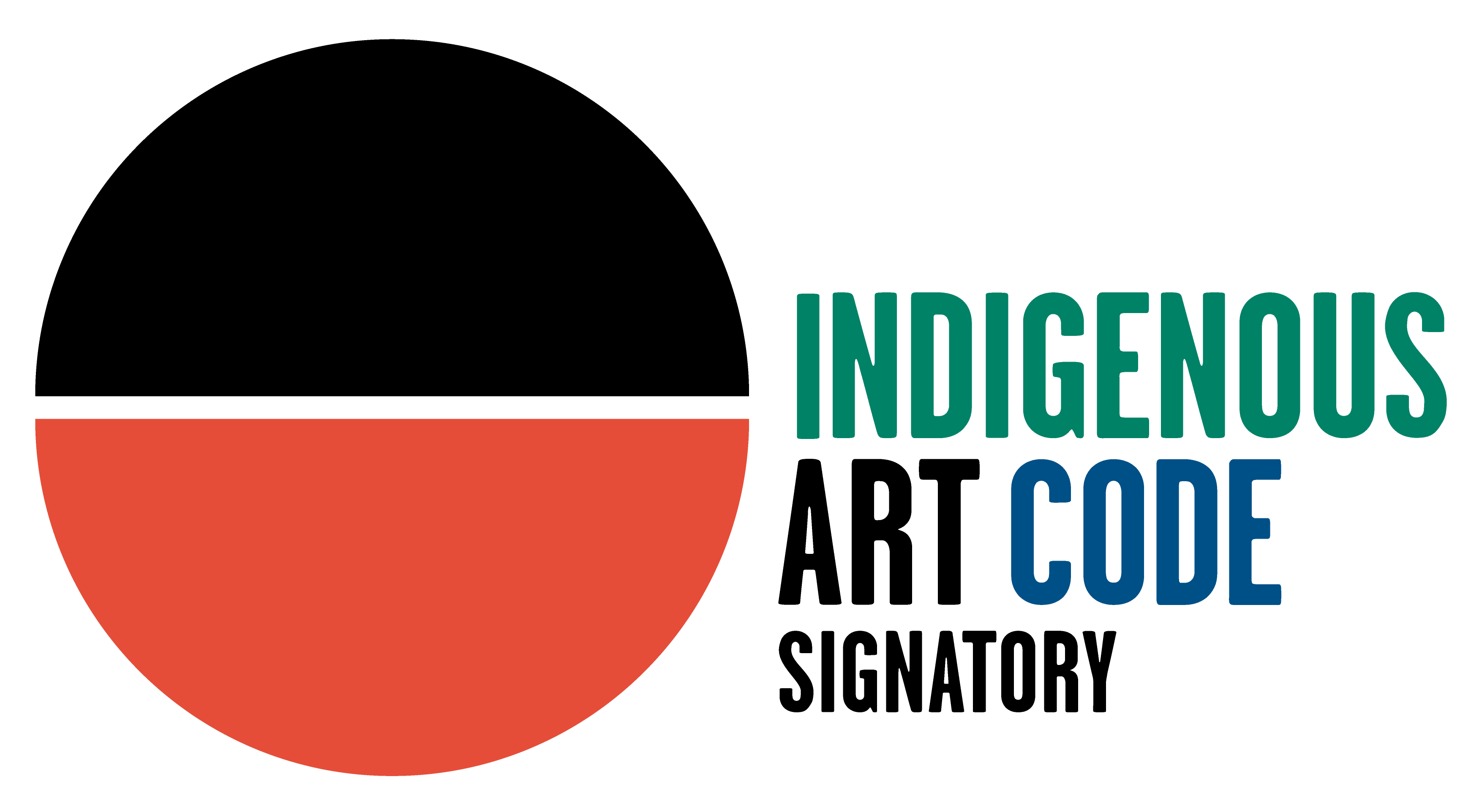Wirrpanda is of the Dhudi-Dhapu clan, Dhuwa moeity, and his homeland is Dhuruputjpi.
He works across the mediums of bark painting, larrakitj and other sculpture. Central themse include Mäna the ancestral shark in the saltwaters of country shared by the Dhuwa clans of the Djapu, Dhudi Djapu, Marrakulu and the Wanapuyŋu, Dhukuyuna and Wawalak.
In other terms, the top and bottom Djapu meeting with the top and bottom Marrakulu clans at this place - Lutumba simplifies the connection. Lutumba refers to an area not just of saltwater but an important area of land that joins at the coast. The area is traditionally used for final resting grounds of the deceased or Wukidi. It is located on the north shore of the Baykultji River and out stream.
Wirrpanda depicts the essence of the Dhudi-Djapu soul, on the move as a result of final mortuary rites, manifest as the shark. In sacred ceremony (such as Dhakiyarr’s Wukiḏi ceremony at the NT Supreme Court on 29.6.03) this spirit follows/is pulled by the sacred line called Yaltharr down deep through the Dhaŋarr or the profound water of Lutumba to the Ancestral reservoir of Buralku.
The liver of this shark is the djukurr or yothu (child) of Dhudi Djapu women who are of necessity married to men from the opposite Yirritja moiety. The children of these unions are born with their father’s kinship identity. Dhudi Djapu people stress the inherent identity of the child as ‘coming from the shark’. Put crudely ‘you can take the liver out of the shark but you can’t take the shark out of the liver’. She is talking of her own children as having the essence of “Dhudi-Djapu-ness” within them.
Other themes include early events during Ancestral (and present) times at Yalata close to the Dhudi-Djapu clan homeland of Dhuruputjpi (about three hours drive South West from Yirrkala). It is a coastal fringe area, this Dhudi Djapu homeland that has territory leading up a river through plains country behind an area of coast on Blue Mud Bay. The plain is tidal and during the wet seasons it is flooded by the rains and tidal surge creating areas of brackish water. During the dry season the grass and black earth dry out. Then the fires come, turning a swamp into a huge plain of cracked black earth.
Fresh water springs dot this sun baked plain forming small islands of vegetation and as Rarrandada (the hot time) builds the thirsty birds come to these sacred springs in their thousands. The noise of the guḏurrku or dhaŋgultji (brolgas) and gurrumaṯji (magpie geese) are deafening, the mud scored with their tracks and the sky dark with the flocks of wheeling birds. In Ancestral times, activities of Mäna the shark and the Djaŋ’kawu took place here. The Djaŋ’kawu - the Dhuwa moiety Creator Beings, in naming this country for the Dhudi Djapu, created these sacred fresh water spring fed waterholes by plunging their sacred digging sticks in the ground. Freshwater sprung from these wells as did a sacred goanna, a manifestation in some circles of the Djaŋ’kawu themselves.
Story has it that on surfacing the goanna saw the first sun rise. Also on the wet clays around the wells the goanna observed the footprints of Dhaŋgultji the Brolga. The prints of the Brolga passing from spring to spring are an echo and a present day manifestation of the Sisters who adopted the form of the brolga in their travels between springs as portrayed by the roundrel.
The Ancestral shark with the generic name of Måna travelled country belonging to various Dhuwa clans who share ritual song of his journey. His travels started in Dhuwa country for the Djambarrpuyngu where he lived at Gurala. A Yirritja Ancestor called Murriyana and his wives came to hunt this place. The women when out to collect oysters saw the shark with a special name of Dhakamawuy. The hunter speared the Shark, wounding him. Måna left the country to travel an epic journey, which is sung and at times re-enacted by Dhuwa clan participants in ceremony. He travelled, as great Creator Ancestors do, under ground to surface through water at various points of significance in northeast Arnhem Land. At one such place in Yirritja land near Gångan he “heard the water coming through”. Måna decided to leave this place and water for his waku (important kin relationship to the opposite moiety through a close female) he re-emerged not so far away at a place named Wandawuy #1, where he hit his head on a rock that marks this spot today. This is spoken of as Måna transferring some power to the rock hence this place. Måna moved on, as he had to many other places and on to many more including the islands of Groote and surrounds.
His resting place however is this area of freshwater belonging to the Dhudi-Djapu clan. The waters of the great Wayawu river that usually are spoken of with a Manggalili/Yirritja clan reference ran into this place Rinydjalngu, so then the Shark, imbuing ownership to the Dhuwa. This is made clear by understanding that the sacred clan design woven into this panel represents the power of Gunduynguru in the freshwater belonging to the Dhudi - Djapu. In this lower reach of the Wayawu the water banks up into massive billabongs of which Rinydjalngu is part. Feeling the need to rest, settle and populate the Shark swam through a special thicket of water palm, sung as Darranggi that ceased his travels.


